The leeward rounding in short-course asymmetric racing is one of the most crucial parts of the race. If you’re in the front pack, you need to think ahead and defend your position around the mark. If you’re behind, this is your main opportunity in the race to attack and get back into the leading pack.
I’m going to talk about things from the perspective of the 49er, where we race with a leeward gate, ie two leeward marks. Most of the same principles apply with a single leeward mark, except that the situation is simpler, so I think we will cover all the things you’ll need to know about in that scenario.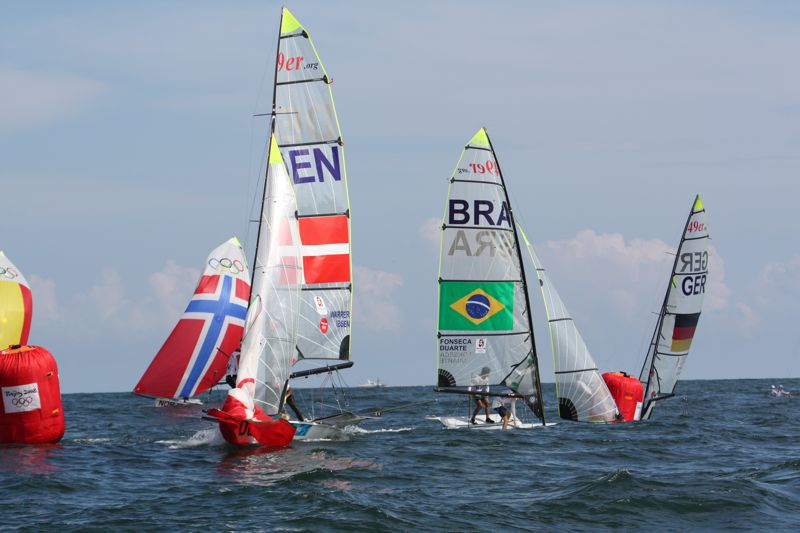
A quick in-and-out
The overriding factor with the leeward rounding is to get in and out of that area as fast as possible because it’s such a stopping point. It’s the only time in the race where boats really tend to slow down, so you want to minimise your ‘down time’.
I think there’s a good analogy here with when you’re driving on the road and you want to overtake a car on a single-lane carriageway. You want to sit a little distance back from them, so that when your overtaking opportunity arrives you can use run-up speed to get past them, and spend the minimum time on the opposite side of the road. It’s similar with the leeward mark; the more speed you come in with on your approach, the better the chance you have of getting out of there quickly too.
Think ahead
Because the leeward rounding is so important, in some cases we’ll start to think about it even before we’ve rounded the windward mark. Normally, we’ll sail past the gate at the start to check if there is any heavy bias, and we’ll make a mental note about which one is favoured. Also, if we think one side of the course is favoured we’ll make a plan to round the mark that takes us out to that side.
If we want the left hand mark (looking downwind), we might even think about a gybe set at the windward mark. We’ve got a number of processes we’ll go through when making our plan. But that plan could change depending on whether we’re in attacking mode (ie looking to gain places) or defending mode (already in a top position).
If we’re defending we’ll aim to make a fast windward mark rounding and to get to the leeward gate as quickly as possible. This might sound obvious, but this gets much harder when you’re attacking, when there are many more things to think about.
When you’ve got space around you, and the luxury of selecting either leeward mark, you want to take the one that will get you out to what you expect the favoured side of the next windward leg will be. This means looking back upwind before your drop the gennaker, to see if there are any useful puffs or shifts coming down either side of the course.
Congestion Charge
However, once you’ve got other boats to contend with, which more often than not you do, then your priorities can change dramatically. If you’ve got a lot of traffic queuing up to go around one mark, then it can pay to go around the other one even when it’s further to sail there. Remember your No. 1 rule of getting in and out of this area a.s.a.p.
If we’re in attacking mode and wanting to come into the mark fast, we’ll aim to come in tight on the layline with speed, and with rights at the mark, and usually aim for a gybe drop inside the boats that are queuing up there. Remember that in an asymmetric boat, which sails wide angles downwind, you can establish rights on other boats sometimes from hundreds of metres away, because you’re overlapped the whole way down.
But bear in mind that if you’re aiming for a gybe drop inside other boats, your boat handling had better be good. The better your boat handling, the more aggressively you can deal with the leeward mark situation. Good boat control gives you more tactical options.
Tactics
Chris Draper's Leeward Gate Secrets #1
Make sure that you plan well ahead. You can see plenty of people that only make their minds up about which leeward mark at the very last minute, but we do everything we can to avoid this. We pretty rarely change our minds into the leeward gate; we’ll discuss it a long way out and try very hard to avoid a situation where you have to make a spontaneous decision. Far better to make a solid plan than to be dictated to by other people, simply because you failed to think ahead.
Related Articles

Chris Draper’s Leeward Gate Secrets #2
Read More
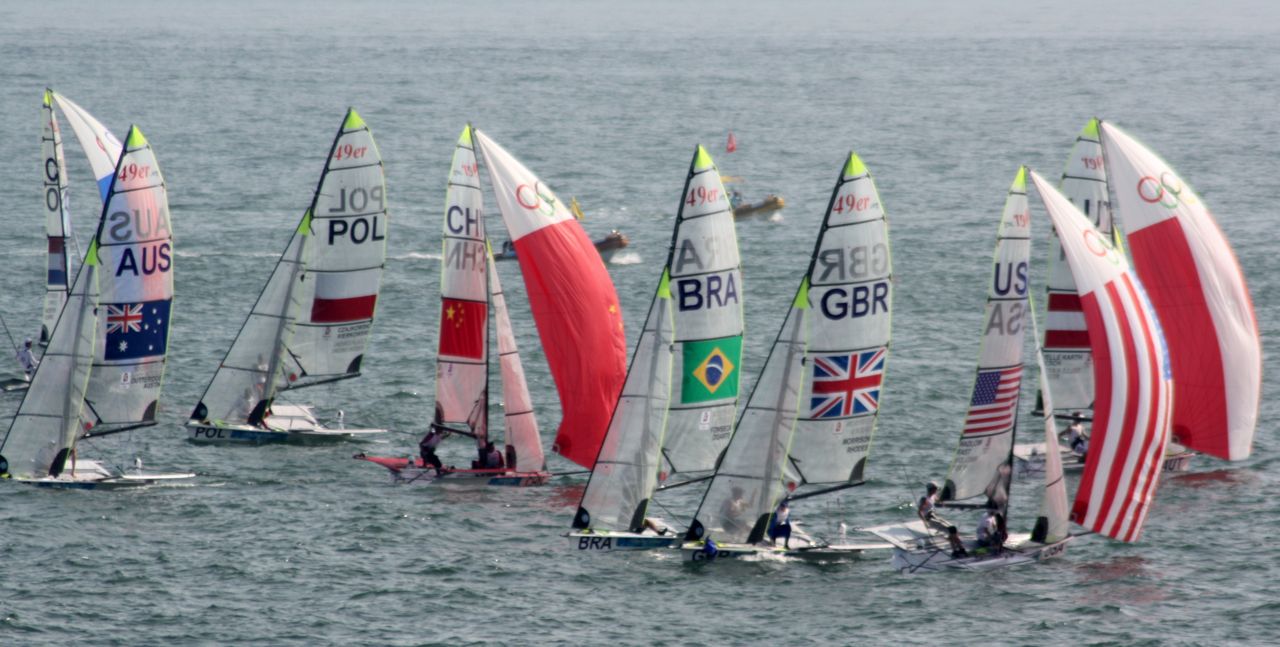
In Part 2 of Chris Draper’s tactics tips for getting out of the leeward mark zone, the 49er champion and America's Cup helmsman considers the reasons for possibly going around the ‘wrong’ mark... "If we are looking to make big gains (ie we’re further back in the fleet), then it might be worth taking the wrong leeward mark and then putting in an early tack over to the favoured side. This way, you’ll have your own lane across to the favoured side...."
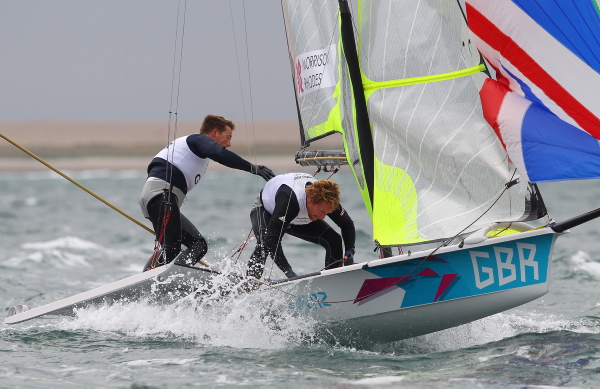
Gybe faster, gybe safer
Read More

49er legend and America's Cup helmsman Chris Draper reveals what high-performance sailors can do to make your gybes not only faster but safer...

Moth foils and rig development with Mike Lennon
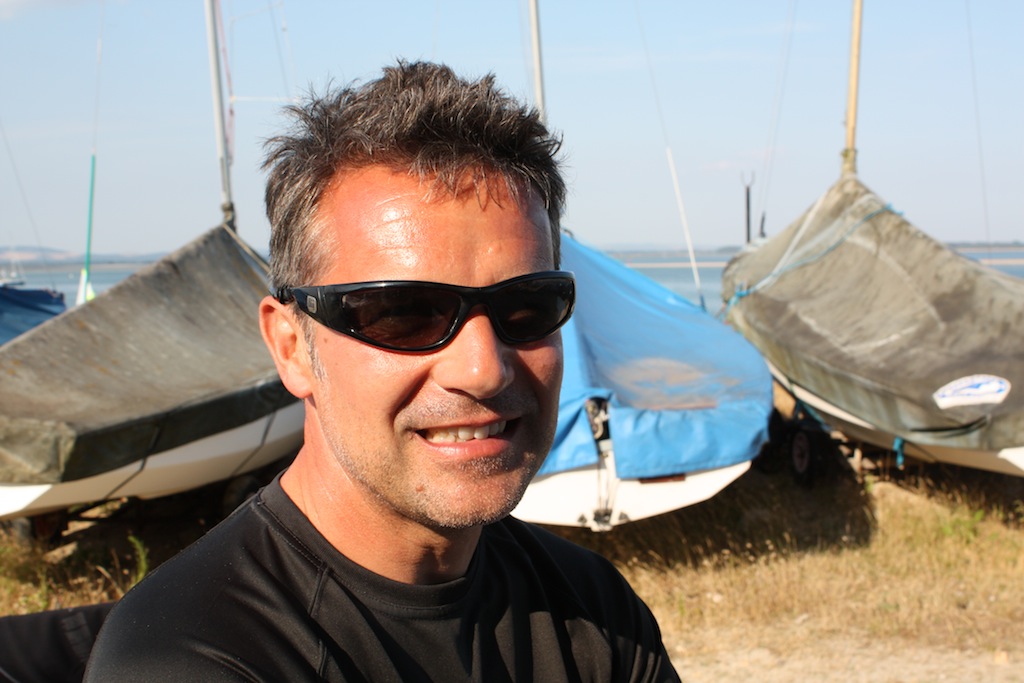 Top Moth sailor and sail designer Mike Lennon talks about the latest technical developments to roll out of the 2015 Worlds in Australia. Mike's sails were well represented at the top of the finish order, with Chris Rashley 4th and Chris Draper 5th overall...
Top Moth sailor and sail designer Mike Lennon talks about the latest technical developments to roll out of the 2015 Worlds in Australia. Mike's sails were well represented at the top of the finish order, with Chris Rashley 4th and Chris Draper 5th overall...
Read More

Talking the same language: Peter Greenhalgh in the 49er
Read More
Peter Greenhalgh won the 49er Europeans in 2010 with Chris Draper after a 'disappointing' sixth place at the Worlds. What changed? One of the primary things this British team worked on was their communication, talking the same language. Justin Chisholm interviewed the sailors...

49er Love & Hate
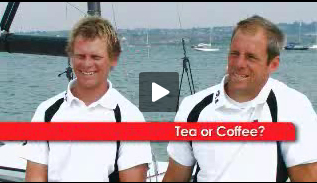 British 49er sailors Chris Draper/Pete Greenhalgh & Stevie Morrison/Ben Rhodes are put on the spot for some quickfire answers. Amazing how much you can learn about people you thought you knew so well!
British 49er sailors Chris Draper/Pete Greenhalgh & Stevie Morrison/Ben Rhodes are put on the spot for some quickfire answers. Amazing how much you can learn about people you thought you knew so well!
Read More
 British 49er sailors Chris Draper/Pete Greenhalgh & Stevie Morrison/Ben Rhodes are put on the spot for some quickfire answers. Amazing how much you can learn about people you thought you knew so well!
British 49er sailors Chris Draper/Pete Greenhalgh & Stevie Morrison/Ben Rhodes are put on the spot for some quickfire answers. Amazing how much you can learn about people you thought you knew so well!